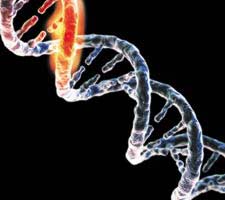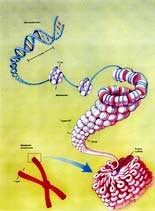In 2003, the Human Genome Project concluded with nearly 25,000 human genes decoded. Currently, there is a race to create affordable genetic maps for every individual.
 |
| In the near future, everyone will have their own genetic map (Image: iesmariademolina) |
The Human Genome Project was completed in 2003, resulting in the decoding of nearly 25,000 human genes.
This achievement was made possible through 13 years of research and millions of USD in funding.
Now, universities, private companies, government agencies, research institutions, and scientists in the United States are engaged in a much grander race: to reduce the cost and time required to decode human genes, allowing each individual to obtain their own genetic map.
DNA (Deoxyribonucleic Acid), a chemical compound located in the cell nucleus, is where genetic information is stored that defines every living organism. The arrangement of DNA molecules, with varying sequences of the bases A-T-G-C, creates the diverse biological traits of each species, including limb count, skin color, hair type, and blood group.
Creating a human genetic map aims to assess the impact of each type of DNA on individual health, which could lead to a revolution in diagnosis, treatment, disease prediction, and the prevention of thousands of genetic disorders currently affecting humanity.
However, the “traditional” technique used in the Human Genome Project involved breaking down DNA segments, cloning them, and using electric currents to pull them through a “window,” activating fluorescent tails to “translate” colors. This process made reading and decoding genes excessively slow and expensive.
Today, advancements in computer technology allow for DNA imaging using digital cameras instead of placing “windows.”
Additionally, in the race to cut costs and speed up gene reading, many laboratories and scientists have invented entirely new methods for decoding genes.
For example, 454 Life Sciences (USA) has found ways to increase the molecular density of DNA read in each instance. “While the old method could only read 384 DNA molecules at a time, our new method can read 200,000 molecules simultaneously,” said Chris McLeod, CEO of the company. McLeod also noted that his company hopes to increase DNA density further, aiming to reduce the cost of decoding an entire genetic map to around $100,000.
The goal set by the National Human Genome Research Institute (USA) for decoding human genes is even higher. They anticipate achieving a price of $100,000 per genetic map within three years, and by 2014, they aim to reduce that price to just one-tenth.
Of course, having a genetic map does not mean that individuals can dismiss all concerns about illness. Contrary to common misconceptions, factors such as living conditions and lifestyle habits also significantly influence human health.
Moreover, the risk of infringing on personal privacy and ethical boundaries threatens to hinder this remarkable scientific progress. Nevertheless, given the information that affordable genetic maps will be available on the market within less than ten years, we have every reason to be excited and hopeful.
|
DNA (Deoxyribonucleic Acid), a chemical compound located in the cell nucleus, is where genetic information is stored that defines every living organism. The arrangement of DNA molecules, with varying sequences of the bases A-T-G-C, creates the diverse biological traits of each species, including limb count, skin color, hair type, and blood group. Creating a human genetic map aims to assess the impact of each type of DNA on individual health, which could lead to a revolution in diagnosis, treatment, disease prediction, and the prevention of thousands of genetic disorders currently affecting humanity. |



















































